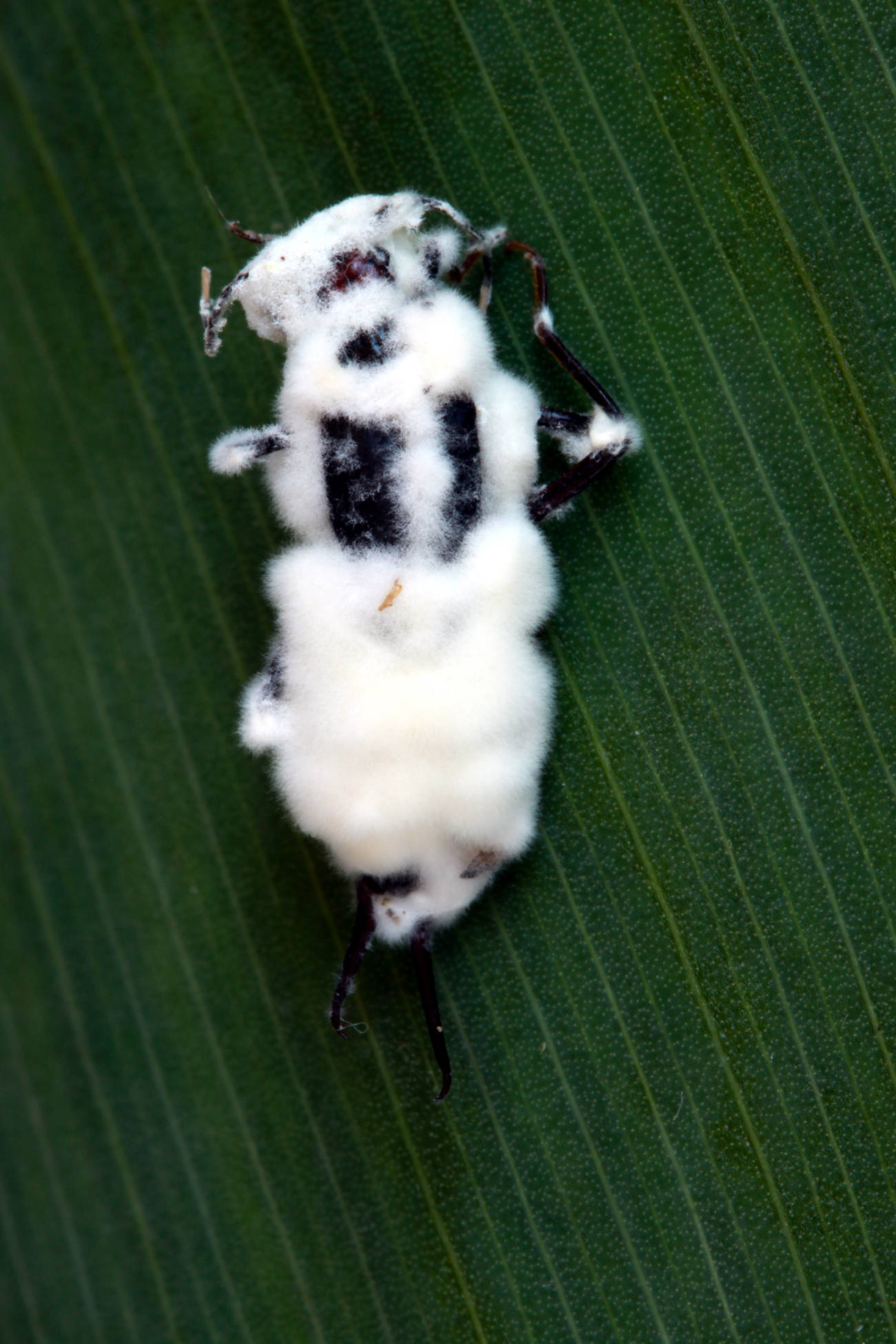
Local name: No local name known
Edibility: Too inconspicuous for culinary purposes.
Habitat: On a wide variety of insect orders especially the following: Coleoptera, Hemiptera and Lepidoptera, loose in the leaf litter or slightly buried in soil – occasionally attached to the underside of leaves or other aerial vegetation.
Description: Stroma: Basal weft of woolly, white mycelium over host. Phialides: Body 2.5-4 x 2-3 μm across with zig-zag rachis up to 30 μm long bearing conidia on inconspicuous sterigmata. Conidia: Round, hyaline, 1.5-2.5 x 1.5 μm.
Comments: This is one of the most commonly collected insect fungi with a world-wide distribution as it has evolved from being a specific pathogen to an opportunist. Consequently, it is commonly found in agricultural ecosystems or gardens where it can infect a wide variety of pests. Throughout the last fifty plus years it has been the subject of investigation as a biological control agent for agricultural insect pests. It was the organism used by Agostino Bassi to demonstrate infection in silk worms in the early nineteenth century. Some thirty years later Louis Pasteur used Bassi's work as the basis for what is now known as the Germ Theory. When Beauveria bassiana was formally named, Bassi's name was used for the species epithet – hence bassiana.


